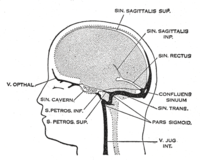
Photo from wikipedia
Cases of coronary and pulmonary artery pseudoaneurysms secondary to COVID‐19 have been reported in the literature and are supposed to be secondary to inflammatory and vasculitis processes linked to a… Click to show full abstract
Cases of coronary and pulmonary artery pseudoaneurysms secondary to COVID‐19 have been reported in the literature and are supposed to be secondary to inflammatory and vasculitis processes linked to a viral multisystem inflammatory syndrome. Although the incidence of COVID‐19‐associated liver injury ranges from 14% to 53% in hospitalized patients, COVID‐19‐associated hepatic artery pseudoaneurysms have never been reported so far. We present the case of a patient whose follow‐up CT after cryoablation of renal cell carcinoma revealed seven fusiform pseudoaneurysms of the two hepatic arteries secondary to COVID‐19. Anticoagulant or anti‐inflammatory treatments were not introduced. Vascular lesions were unchanged on the 3‐month follow‐up CT. At 6‐month CT, the proximal pseudoaneurysm was replaced by a proximal occlusion of the accessory RHA.
Journal Title: Liver International
Year Published: 2022
Link to full text (if available)
Share on Social Media: Sign Up to like & get
recommendations!